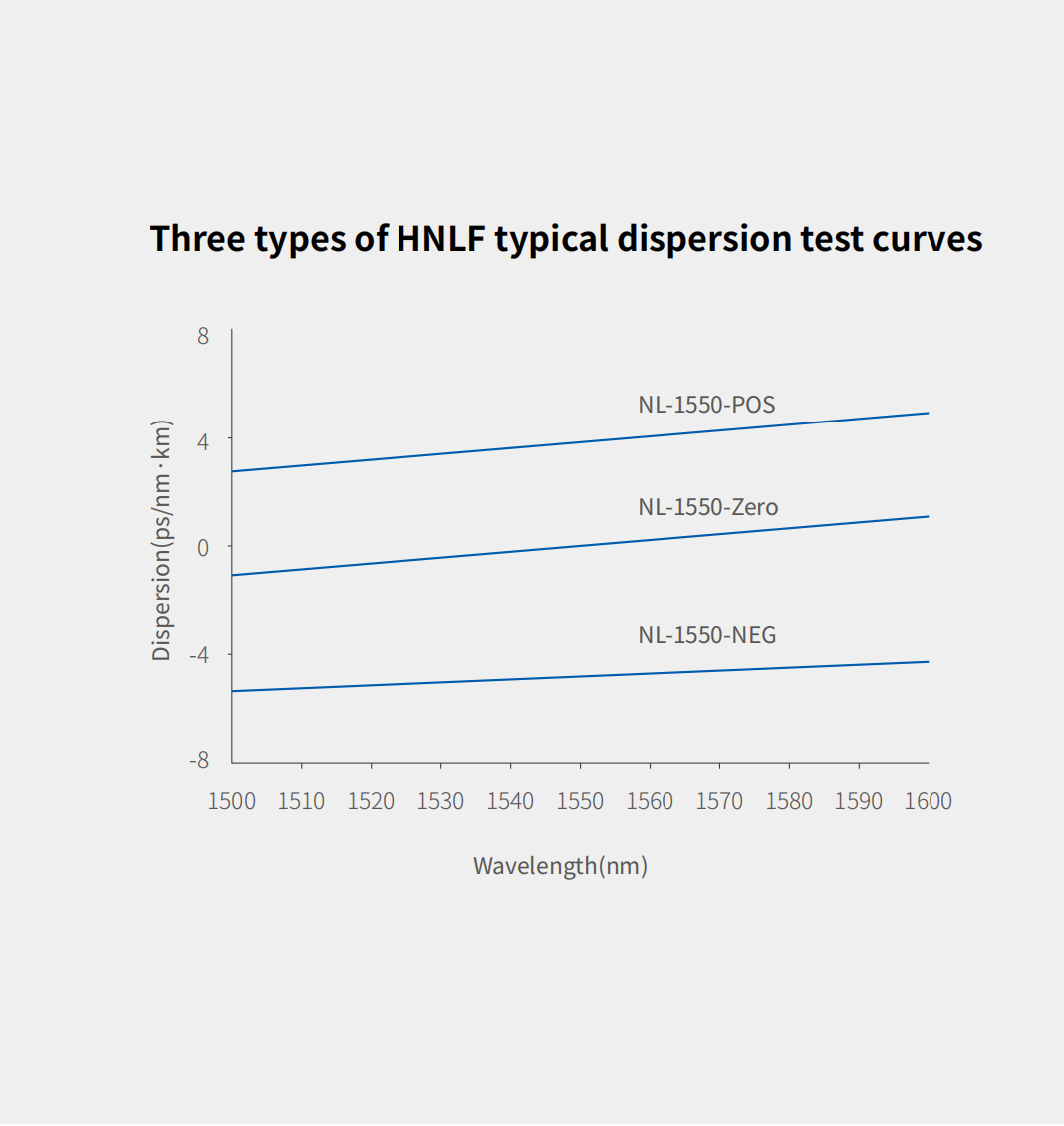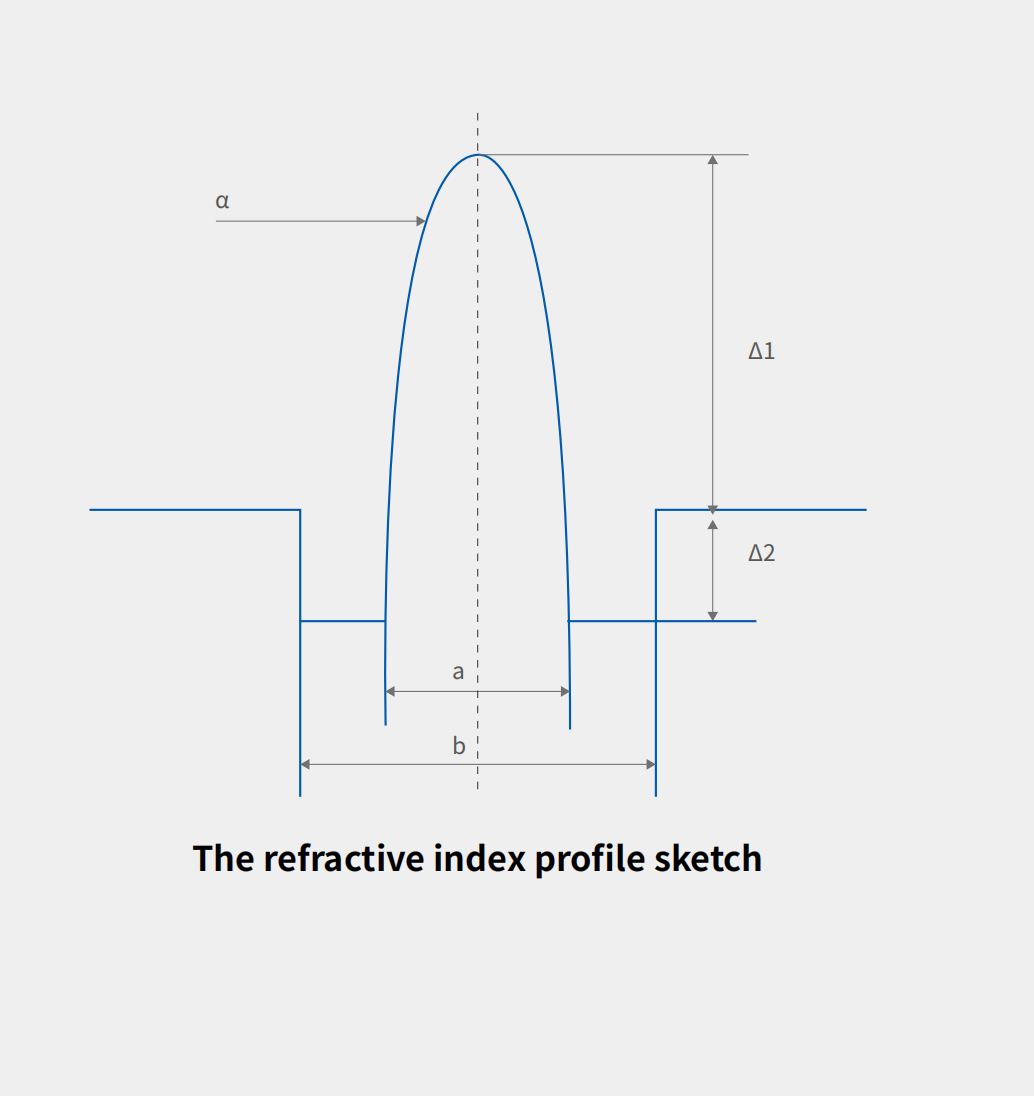- Parametric amplification
- Wavelength conversion
- Pulse compression
- Super-continuum source
- Light regenerator
- Discrete type (or lumped type) Raman amplifier

The nonlinear effect of optical fibre, such as stimulated Raman scattering (SRS), stimulated brillouin scattering and optical Kerr effect, has many applications in the field of communications and optical signal processing. In the Kerr effect, refractive index of optical dielectric materials changes with luminous power, which will lead to a series of secondary effects, such as the self-phase modulation(SPM), cross phase modulation(XPM), four wave mixing(FWM), and the unsteady modulation. Optical Kerr effect can be used in optical parametric amplification, frequency conversion, phase coupling, pulse compression and generation, optical soliton transmission , etc.
The design of the high nonlinear optical fibre on several aspects need to be taken into account. Firstly, optical fibre should have high nonlinear coefficient to obtain effective nonlinear interaction. Secondly, optical fibre must have a lower loss in order to increase the effective length.
Moreover, the dispersion of optical fibre should match various applications. Finally, the nonlinear optical fibre must have low polarization mode dispersion. For silica-based high nonlinear optical fibre, the design of the refractive index profile plays an important role to meet the above requirement. Small core effective area, low dispersion slope and cutoff wavelength which is much smaller than the operating wavelength must be implemented at the same time in the design of high nonlinear optical fibre.
YOFC HNLFs not only have high nonlinear coefficient and very low dispersion slope at the same time. YOFC uses W type to design profile which is flexible, and the cladding in low refractive index is introduced around the core step refractive index.


|
Fibre Type |
NL 1550-POS |
NL 1550-Zero |
NL 1550-NEG |
|---|---|---|---|
|
Part No. |
NL1016-A |
NL1016-B |
NL1016-C |
|
Optical Properties |
|||
|
Operating Window |
C wavelength |
C wavelength |
C wavelength |
|
Dispersion Slope@1550nm (ps/nm2·km) |
< 0.035 |
< 0.030 |
< 0.030 |
|
Dispersion@1550nm (ps/nm·km) |
> 1 |
0.0 ± 1 |
< -1 |
|
Nonlinear Coefficient@1550nm (W-1km-1) |
≥ 10 |
≥ 10 |
≥ 10 |
|
Attenuation Coefficient@1550nm (dB/km) |
≤ 1.5 |
≤ 1.5 |
≤ 1.5 |
|
Cut-off Wavelength(nm) |
< 1480 |
< 1480 |
< 1480 |
|
Numerical Aperture(typical value) |
0.35 |
0.35 |
0.35 |
|
Geometry Properties |
|||
|
Cladding Diameter (μm) |
125.0 ± 5.0 | 125.0 ± 5.0 | 125.0 ± 5.0 |
|
Cladding Non-circularity (%) |
≤ 1 |
≤ 1 |
≤ 1 |
|
Core/Cladding Concentricity (μm) |
≤ 0.5 |
≤ 0.5 |
≤ 0.5 |
|
Coating Diameter (μm) |
245.0 ± 10.0 | 245.0 ± 10.0 | 245.0 ± 10.0 |